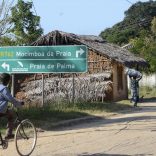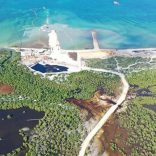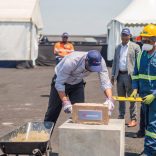Mozambique: Two hotels, 21 offices and more seized by the Attorney General's Office in 2024
Brazilian Odebrecht to have paid US$900,000 in bribes in Mozambique

Odebrecht is said to have paid US$900,000 in bribes in Mozambique between 2011 and 2014 to win public works tenders. The names of the recipients have not yet been revealed, and the US court has not this time spoken of the existence of any “Agent C”, the designation of the figure that in the Embraer case is said to have facilitated the sale of two aircraft to national airline LAM in return for US$800,000 dollars.
Moreover, the US Department of Justice says that it has no information on the benefits that the Brazilian construction company won in Mozambique in exchange for US$900,000. However, it is known that Odebrecht was responsible for the construction of Nacala International Airport, valued at more than US$200 million. It was the first airport built after independence and opened in December 2014, with capacity to serve 500,000 thousand passengers and receive 5,000 tons of cargo per year.
The Brazilian construction company was also selected to run the BRT in the city of Maputo, a project valued at US$225 million and consisting of the construction of corridors for the rapid flow of passenger transport buses. Funding for the project is now being re-evaluated, according to Brazilian media quoting sources in Michel Temer’s government.
Information on corruption involving Odebrecht and Mozambique comes weeks after the revelation of another case of the payment of bribes to Mozambicans by a Brazilian company. Aircraft manufacturer Embraer allegedly paid US$800,000 to José Viegas and Mateus Zimba during the course of selling two aircraft to the flagship company LAM. At the time, José Viegas was LAM’s PCA and Mateus Zimba worked for the South African petrochemical company Sasol.
Mozambique is not the only African country where Odebrecht has reputedly paid bribes to win contracts. In Angola, where the Brazilian construction company is the largest employer, bribes of around US$50 million are said to have been paid.
Mozambique and Angola are on a list of 11 countries where Odebrecht has paid the equivalent of US$439 million in bribes. The figure excludes the hundreds of millions of dollars that the company paid to political leaders in Brazil.
Final fine only in April 2017
The final amount of the fine to be paid has not yet been determined and will only be announced in April next year, when the US and Brazilian authorities complete their analysis of construction company’s accounts.
For now, the US government says that Odebrecht agreed that an appropriate amount would be US$4.5 billion, but the Brazilian company said it could pay a maximum of US 2.6 billion to Brazil, the United States and Switzerland. If it does not pay the fine or stops collaborating with the investigations, the company and its executives may face even tougher sanctions. In the case of the United States, prosecutors can take the case to court and request that the company be banned from the country, as well as request that its executives be extradited to serve time in US prisons.
Billions of dollars to stop investigations
The US court says it is the highest fine for a global corruption case in history. Odebrecht will have to pay at least US$800 million to the United States and Switzerland to end corruption investigations.
The amount will be taken from the US$3.5 billion fine provided for in the agreements that Odebrecht and Braskem signed in Brazil over their participation in the corruption scheme exposed by the Lava Jato [‘Car Wash’] operation.
So far, there have been no reports of bribery payments in Switzerland and the United States, but the laws of both countries allow local authorities to prosecute foreign companies for acts of corruption in other nations, as long as the companies have some link with the country.
In the Swiss case, accounts in the country were purportedly used by Odebrecht to transfer money destined for or derived from bribes.
In the US, two Odebrecht employees took part in activities related to corruption in Miami. US officials also say that some of the companies used to distribute clandestine payments were created or operated by individuals in the United States.












Leave a Reply
Be the First to Comment!
You must be logged in to post a comment.
You must be logged in to post a comment.